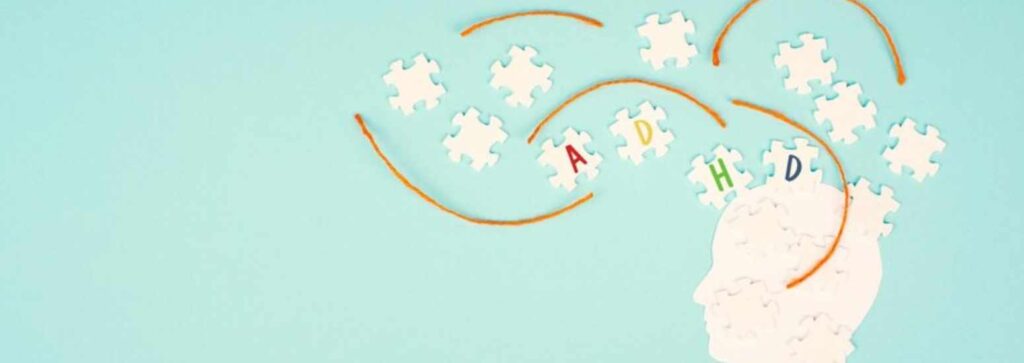
Title: The Significance of Prompt ADHD Diagnosis and Evidence-Based Intervention
Attention-deficit/hyperactivity disorder (ADHD) is a multifaceted neurodevelopmental disorder affecting millions throughout their lives. Although it has long been deemed a childhood condition, recent studies indicate that ADHD frequently extends into adulthood, and the lack of timely diagnosis and treatment can lead to severe long-term repercussions. Thankfully, early diagnosis and the application of a comprehensive treatment approach can greatly enhance outcomes—socially, academically, and emotionally.
Recognizing the Effects of Undiagnosed ADHD
Current research illustrates that untreated ADHD correlates with numerous adverse outcomes. These encompass low self-esteem, depression, anxiety, substance use disorders, suicidal tendencies, heightened risk of motor vehicle accidents, and criminal activity. Many complications stem not from deliberate misbehavior but from the inherent characteristics of ADHD—such as distractibility, impulsivity, and compromised executive function. If left unmanaged, these symptoms can disrupt planning, organization, emotional regulation, and daily functioning.
The risks associated with undiagnosed ADHD carry into adulthood, dispelling the enduring myth that children simply “outgrow” the disorder. Adults who were never diagnosed during childhood—particularly women and girls—often endure significant challenges in silence. Girls, in particular, are frequently underdiagnosed due to the more subtle manifestations of inattentive ADHD (formerly known as ADD), as compared to the more overt symptoms typically seen in boys.
Genetic and Environmental Influences
ADHD is largely hereditary, with heritability rates estimated to be between 75% and 90%. This substantial genetic influence highlights the necessity of understanding ADHD as a valid, biologically rooted condition, rather than attributing it to poor parenting or deliberate behavior. Numerous genes, contributing in nuanced ways, come together to create the diverse presentations of ADHD observed across individuals.
While environmental factors can affect the expression of ADHD symptoms, they do not directly cause the condition. Certain perinatal factors—such as prematurity, maternal hypertension, and tobacco use during pregnancy—have been linked to a greater likelihood of developing ADHD. Neurological injuries, like strokes or traumatic brain injuries, can also manifest similar symptoms. The growing acknowledgment of ADHD may partly stem from improved survival rates of preterm infants, who are at a higher risk for such neurodevelopmental challenges.
The Constraints of Assessment Tools
Standardized ADHD assessment instruments are valuable screening tools, but they should not be solely relied upon. Exclusive dependence on these instruments may result in overdiagnosis or missing other disorders that present similar symptoms. An accurate diagnosis necessitates a comprehensive approach: gathering a thorough developmental and medical history, comprehending the individual’s environment, identifying any coexisting psychological conditions, and performing a physical examination. Evaluation by a knowledgeable professional aids in distinguishing ADHD from learning disorders, trauma responses, and various mood or anxiety-related conditions.
Neuropsychological testing, while not mandatory for diagnosis, can be beneficial—especially in educational contexts—to uncover coexisting learning disabilities and social skill deficits that might need accommodation.
Prompt Intervention and Comprehensive Treatment
Recognizing ADHD early in children allows for a multi-faceted treatment strategy that encompasses:
– Psychoeducation for families and caregivers
– Behavioral therapy for children
– Parent management training
– Collaboration with teachers and classroom adjustments
– Medication, typically stimulant medications like methylphenidate and amphetamines
The objective is not to “fix” the child, but to alleviate ongoing failures and frustrations that can arise when adults misinterpret symptoms as laziness or defiance. ADHD is not a moral flaw but a brain-based condition impacting impulse control, working memory, emotional regulation, and motivation.
Children with ADHD often face challenges with time management and may feel overwhelmed by tasks requiring multi-step planning. Their frustration tolerance may be lower, leading to emotional outbursts when they feel overstimulated or overburdened. When caregivers have insight into these challenges, they are better equipped to provide support rather than punishment.
Executive Function and Environmental Organization
The central challenge in ADHD is diminished executive function—the brain’s mechanism for planning, prioritizing, initiating, and completing tasks. Due to these difficulties, individuals with ADHD significantly benefit from structured and supportive environments.
Altering surroundings doesn’t “cure” ADHD, but it can markedly improve functioning. Techniques such as visual reminders, timers, checklists, or breaking projects down into smaller, manageable parts are vital. For instance, a student feeling overwhelmed by a book report might achieve success by tackling it in incremental steps: reading assigned pages daily, writing brief summaries, and ultimately assembling them into a cohesive narrative.
Managing external distractions is equally important. Tools like white noise, quiet areas, noise-canceling headphones, or preferred seating in classrooms may be essential for facilitating focused attention.
Support Throughout Adulthood
While some adults with ADHD cultivate effective coping mechanisms—often after prolonged struggles—others remain undiagnosed and continue to underachieve. Some experience significant difficulties with organization, completing tasks, or maintaining relationships. Chronic lateness, forgotten responsibilities